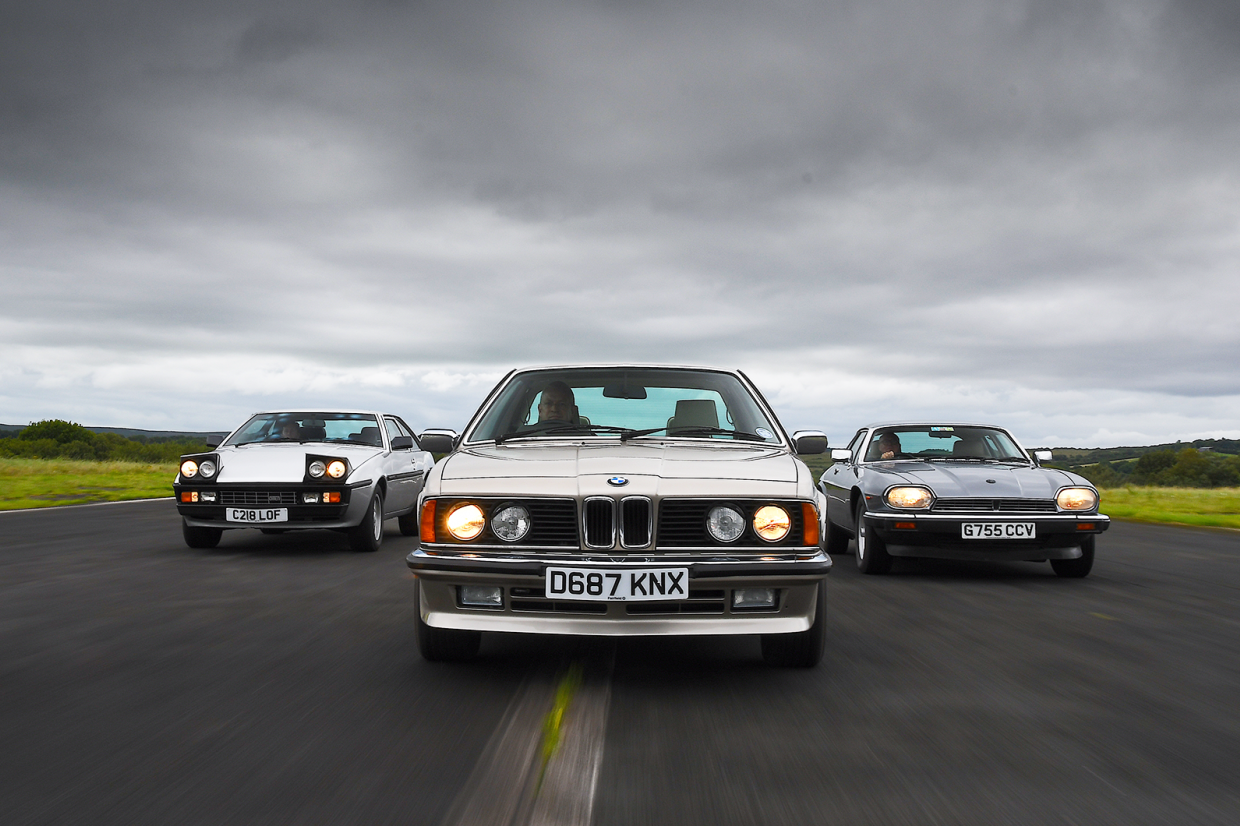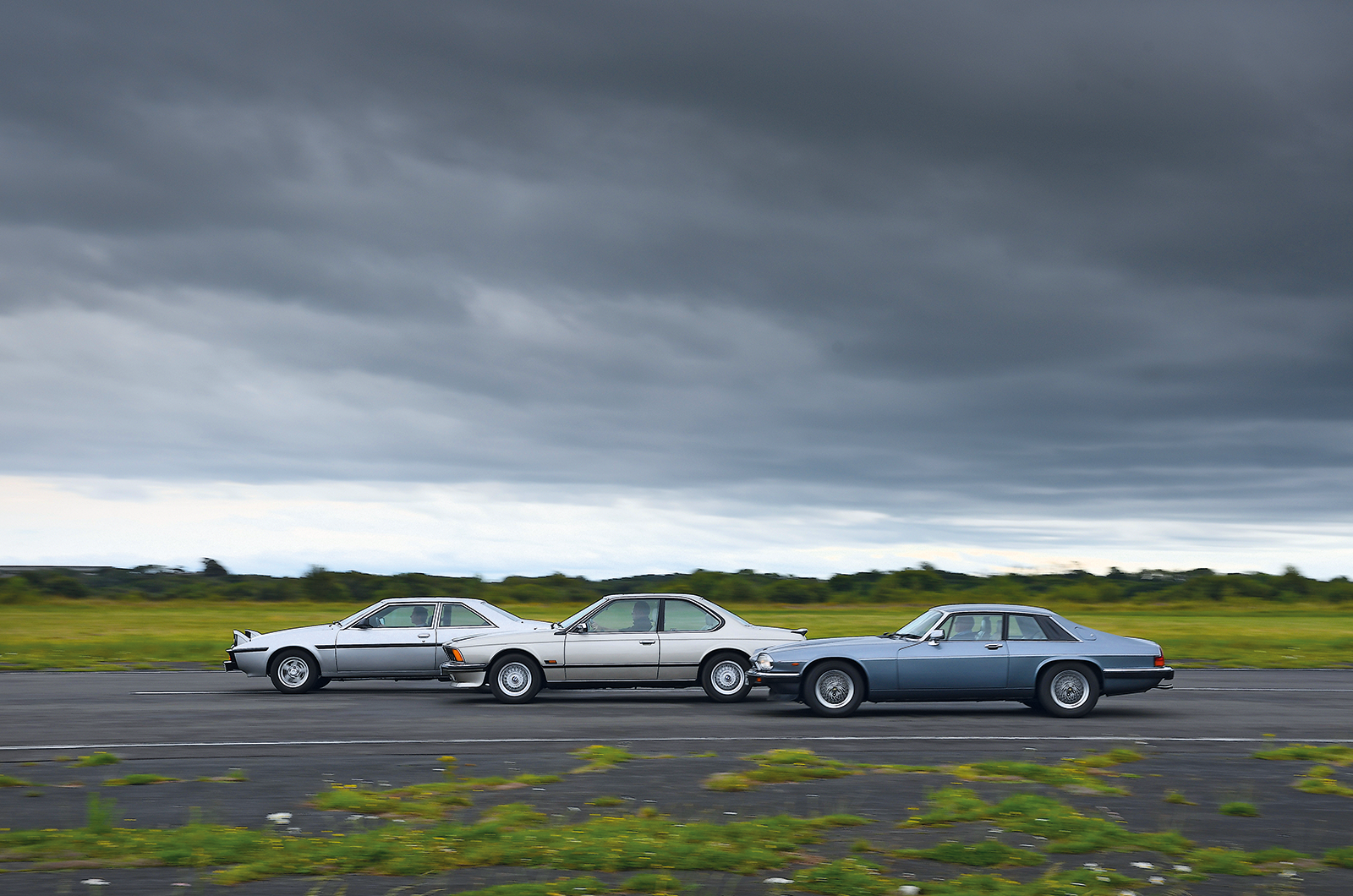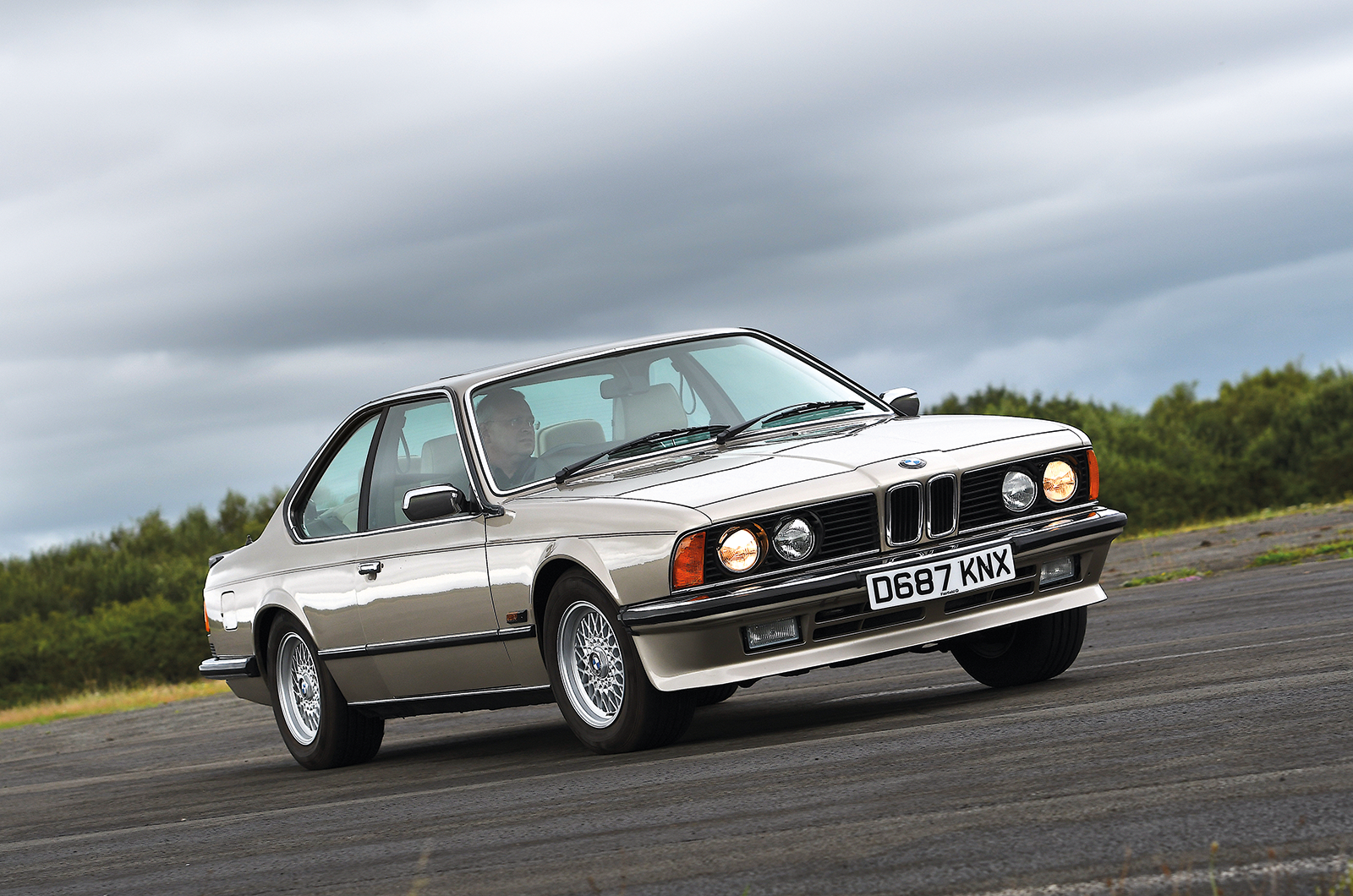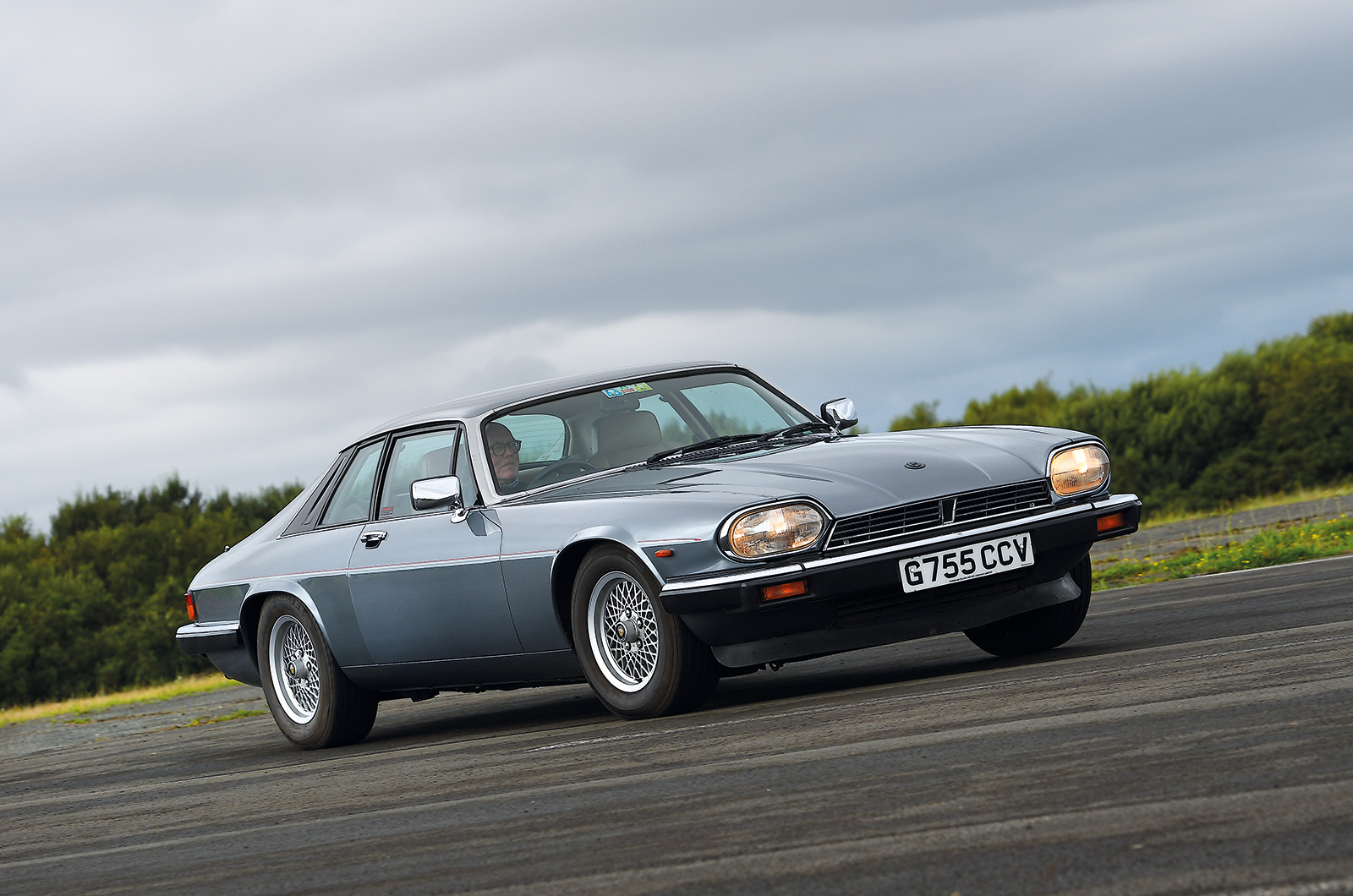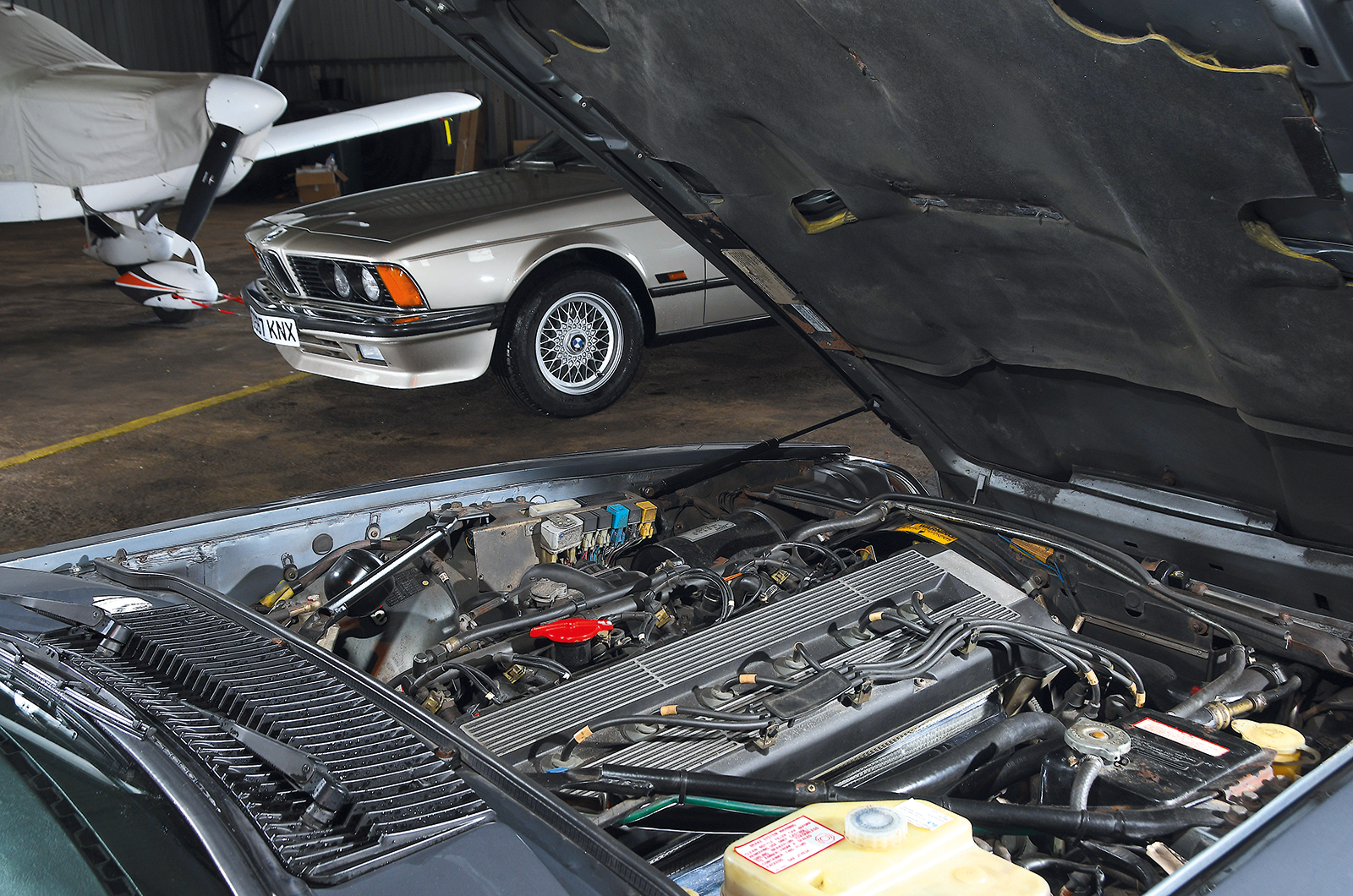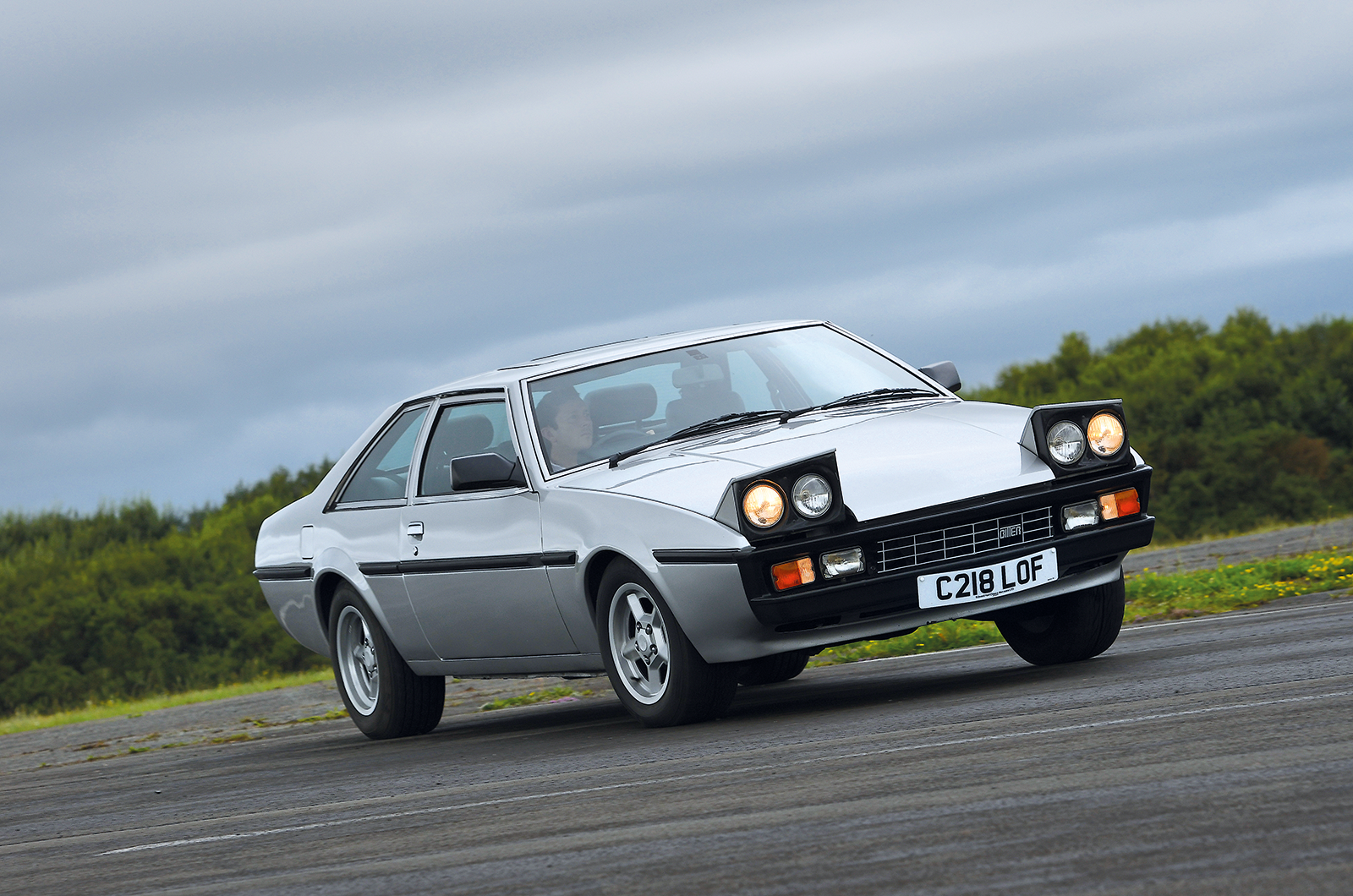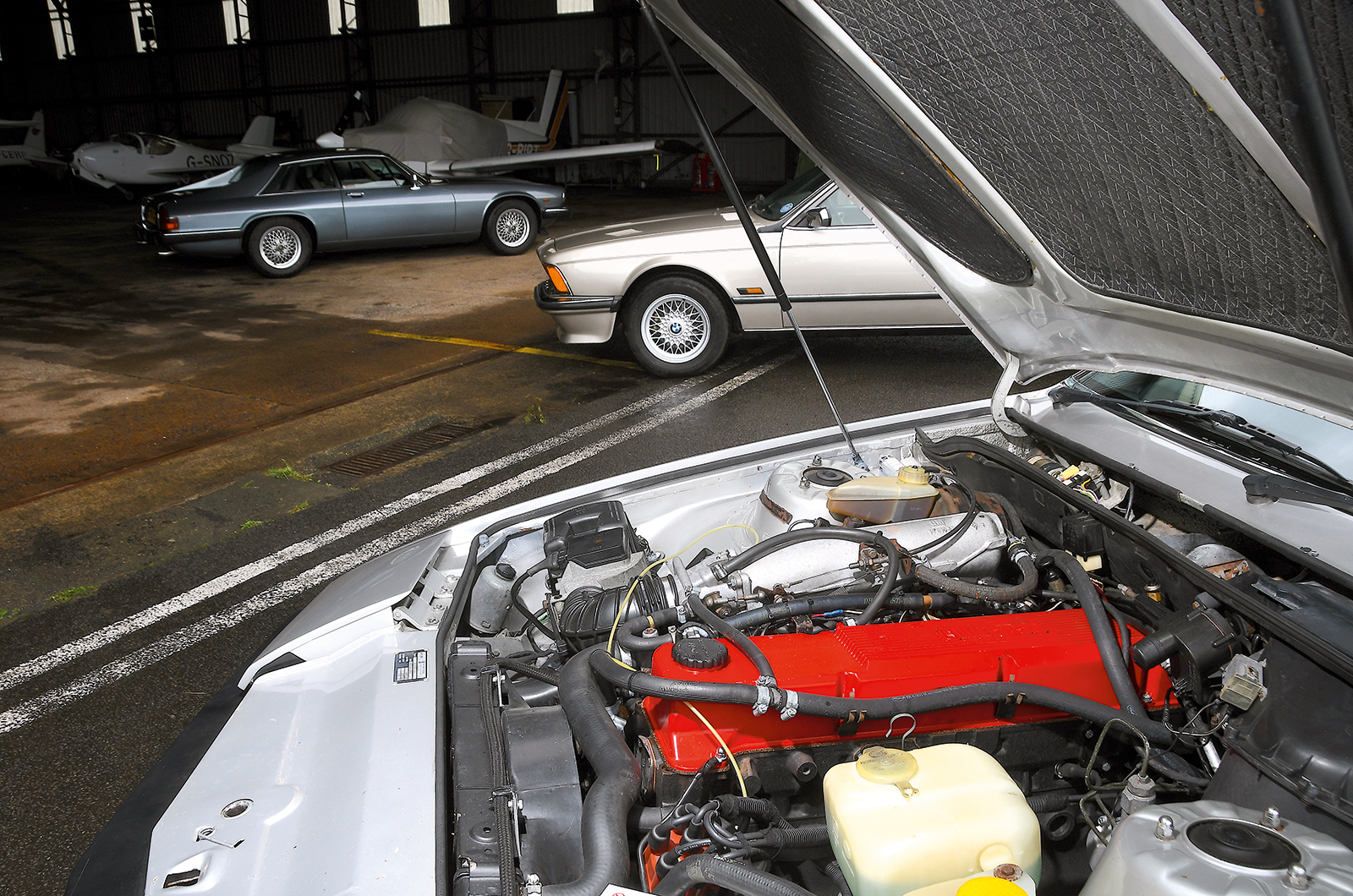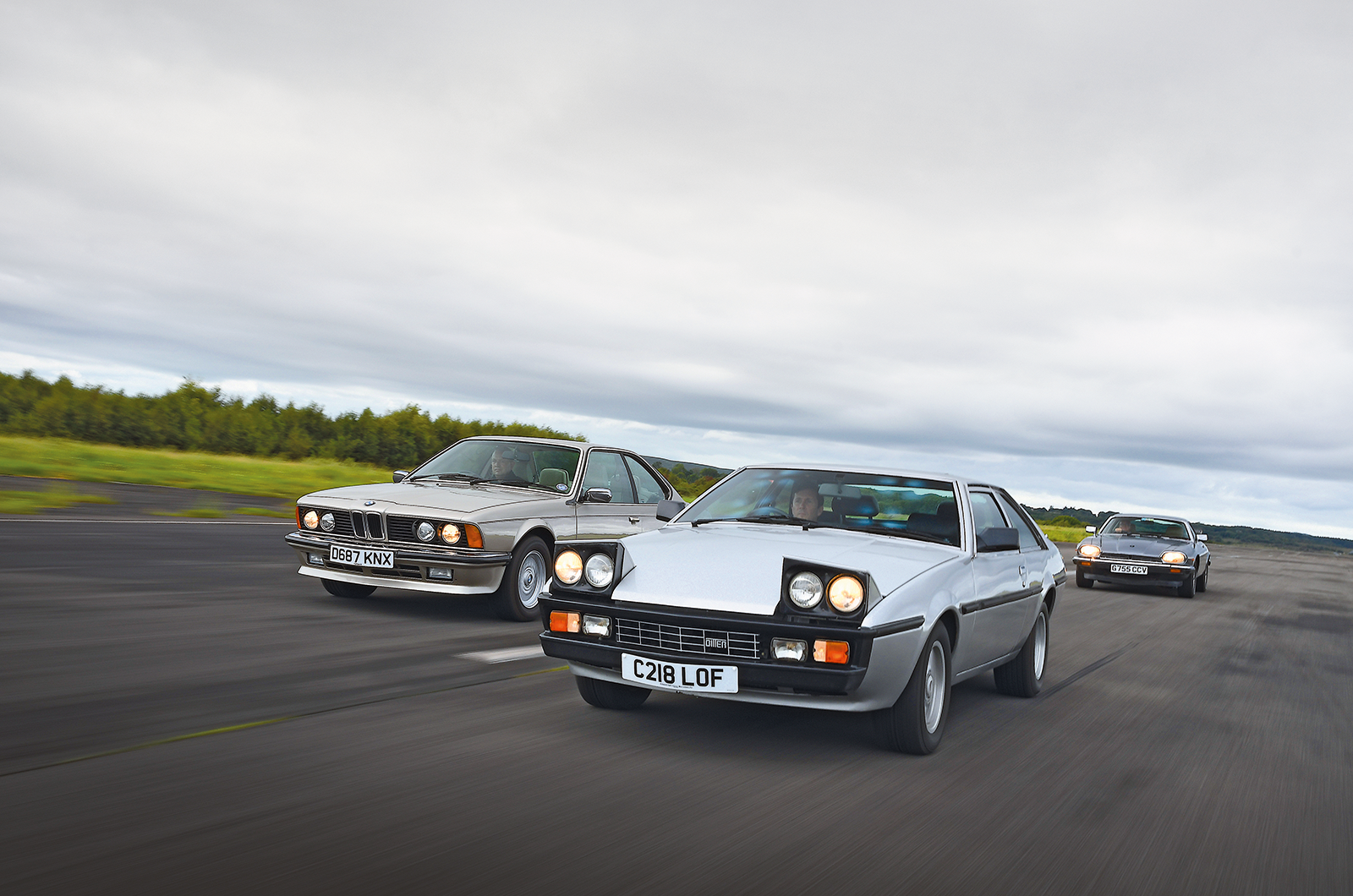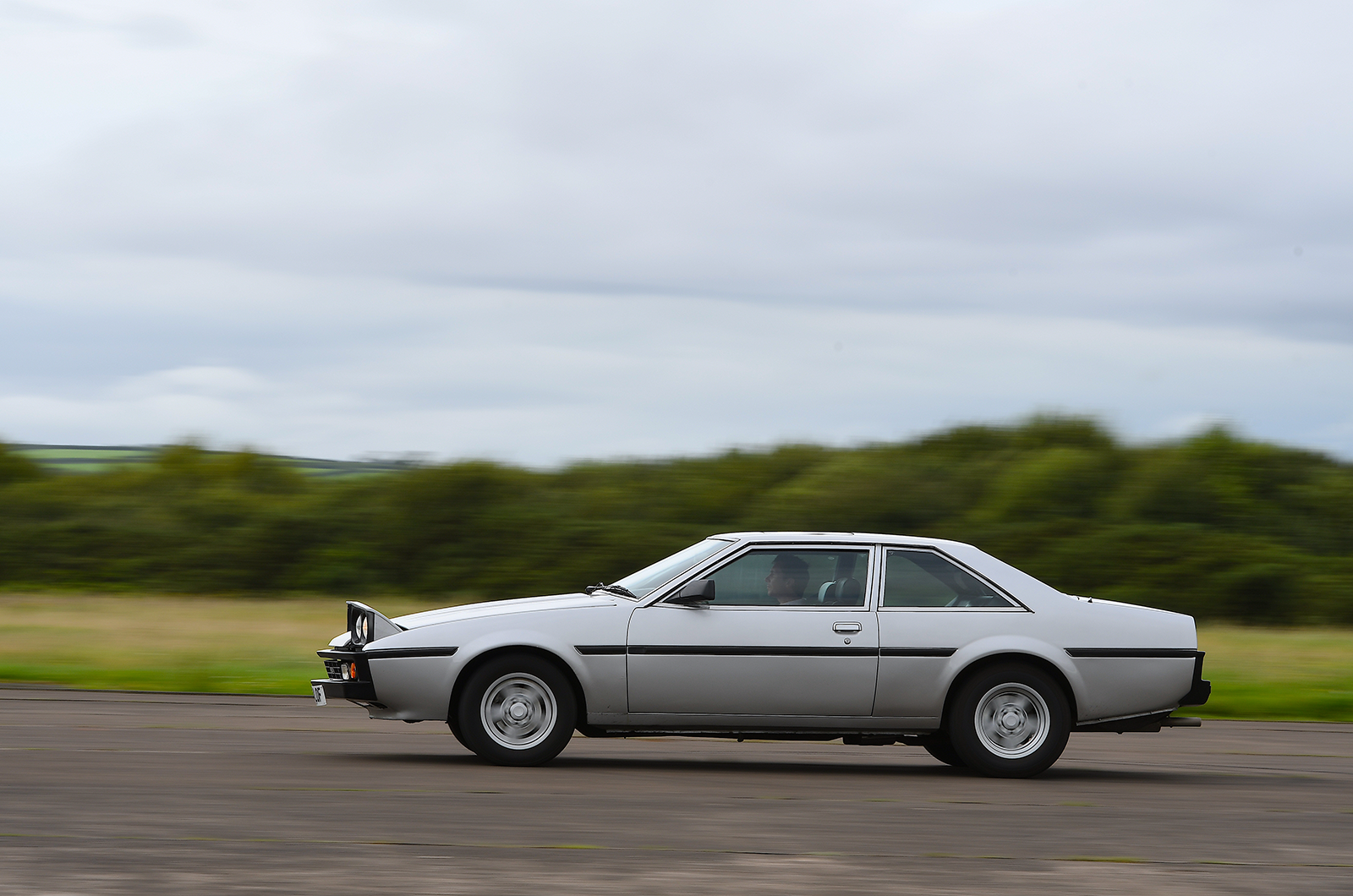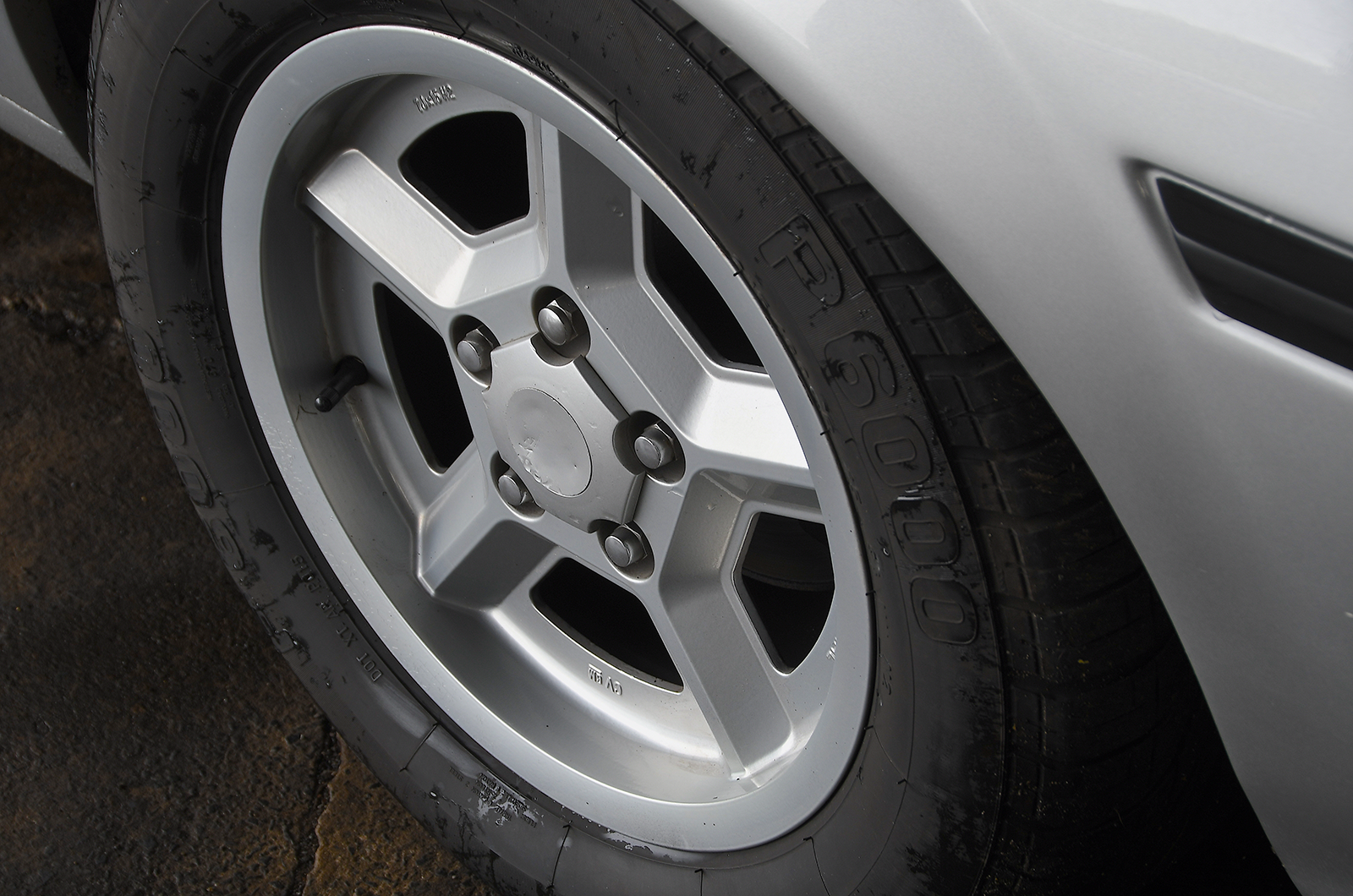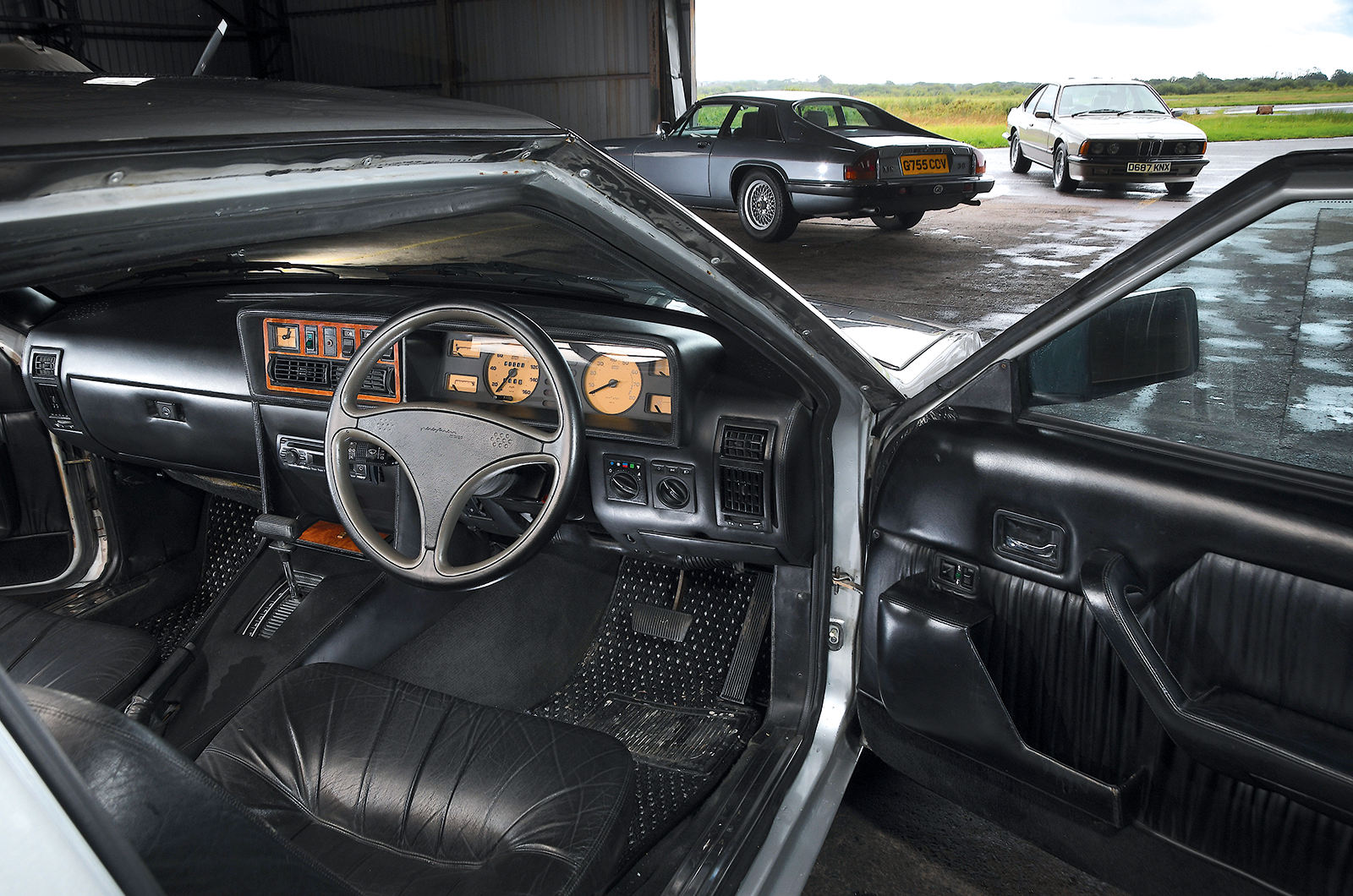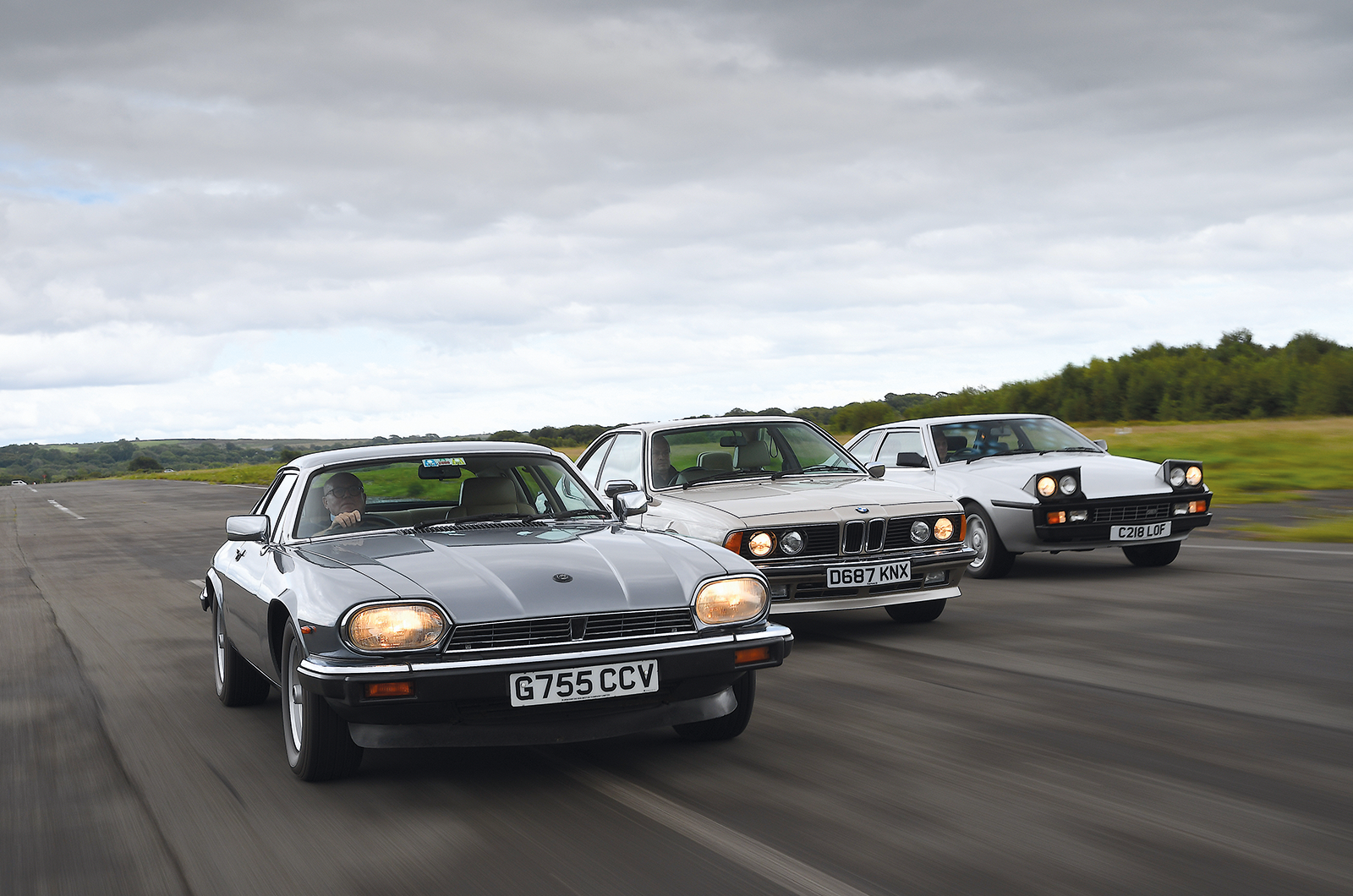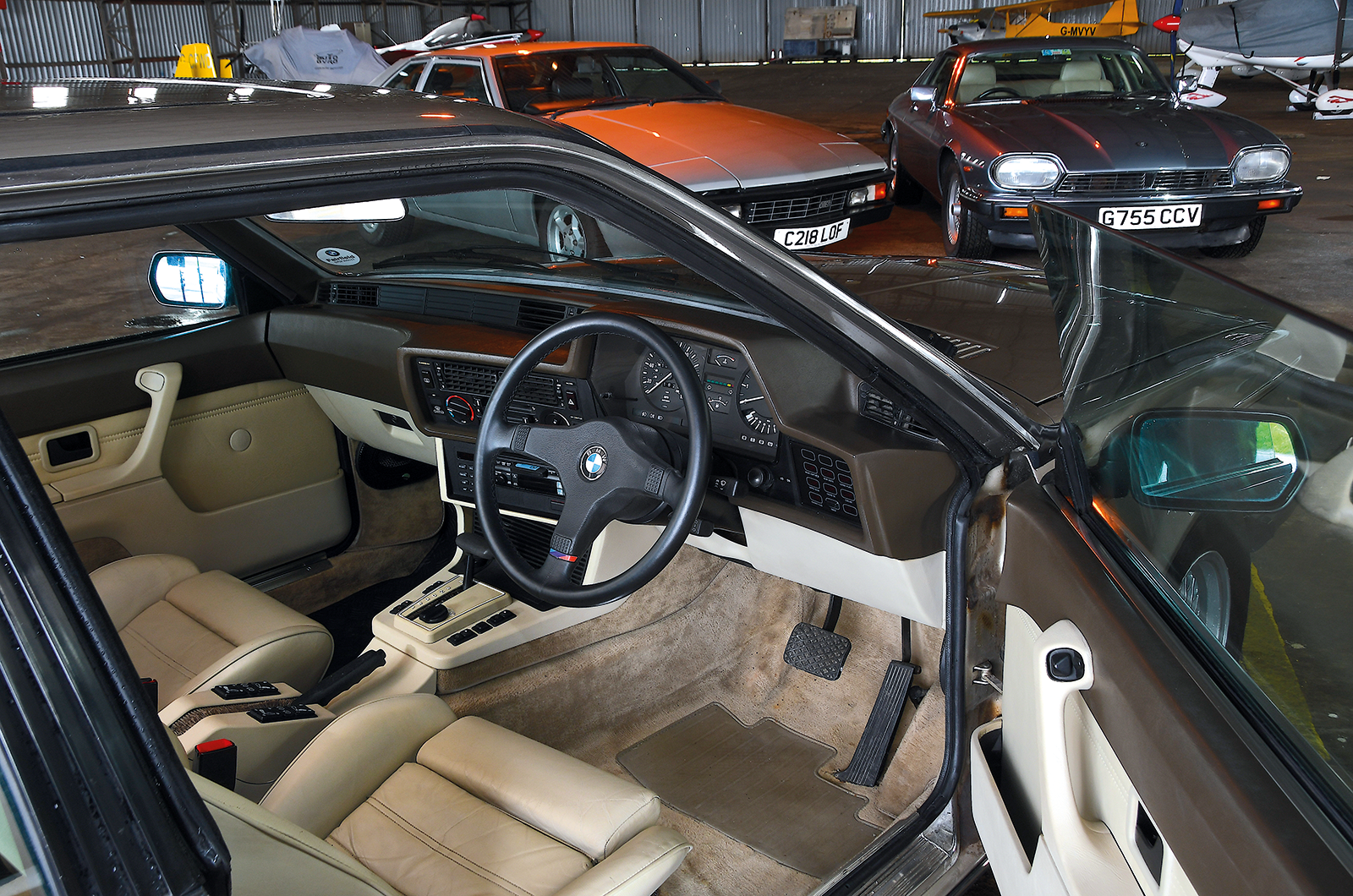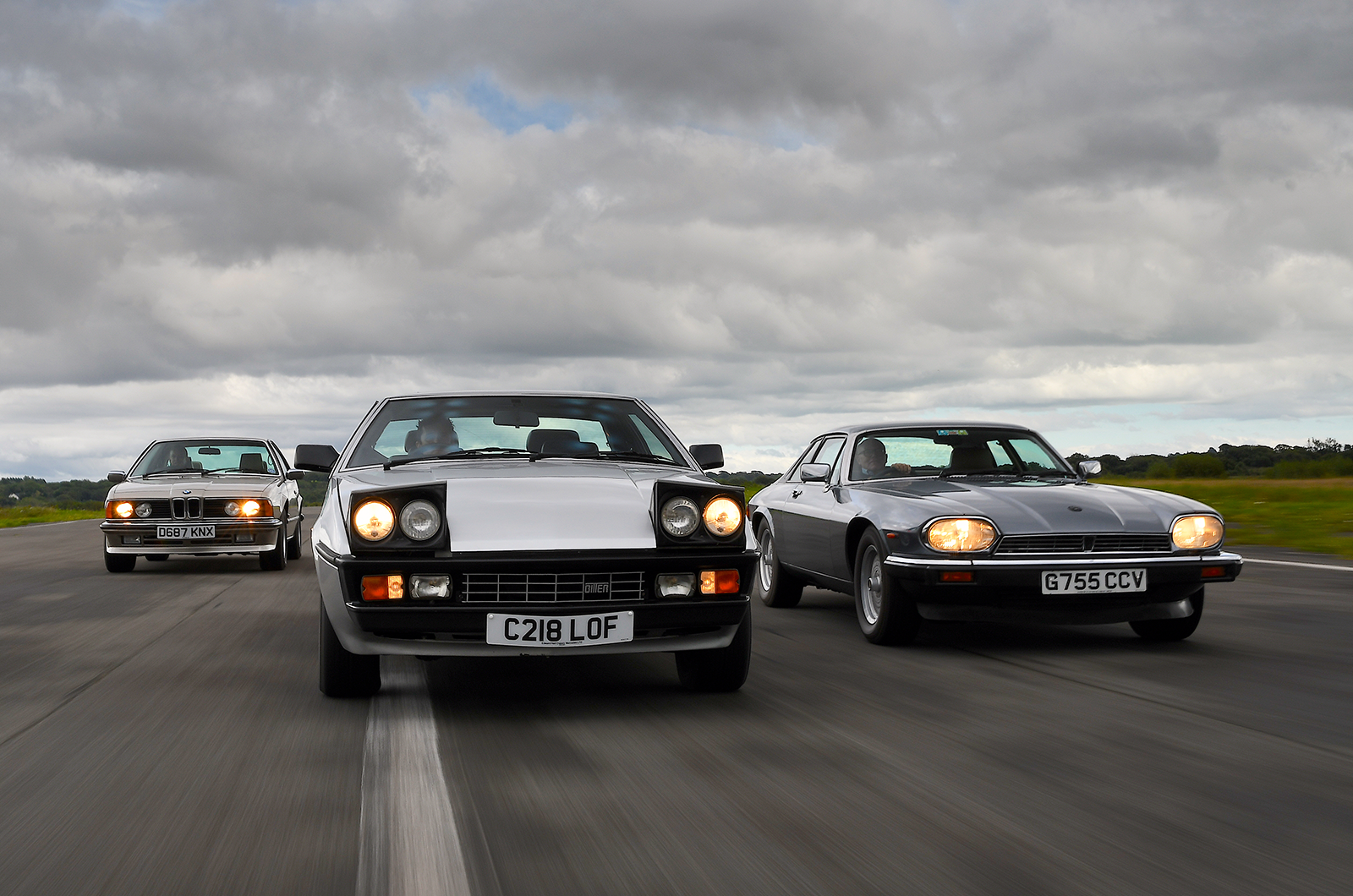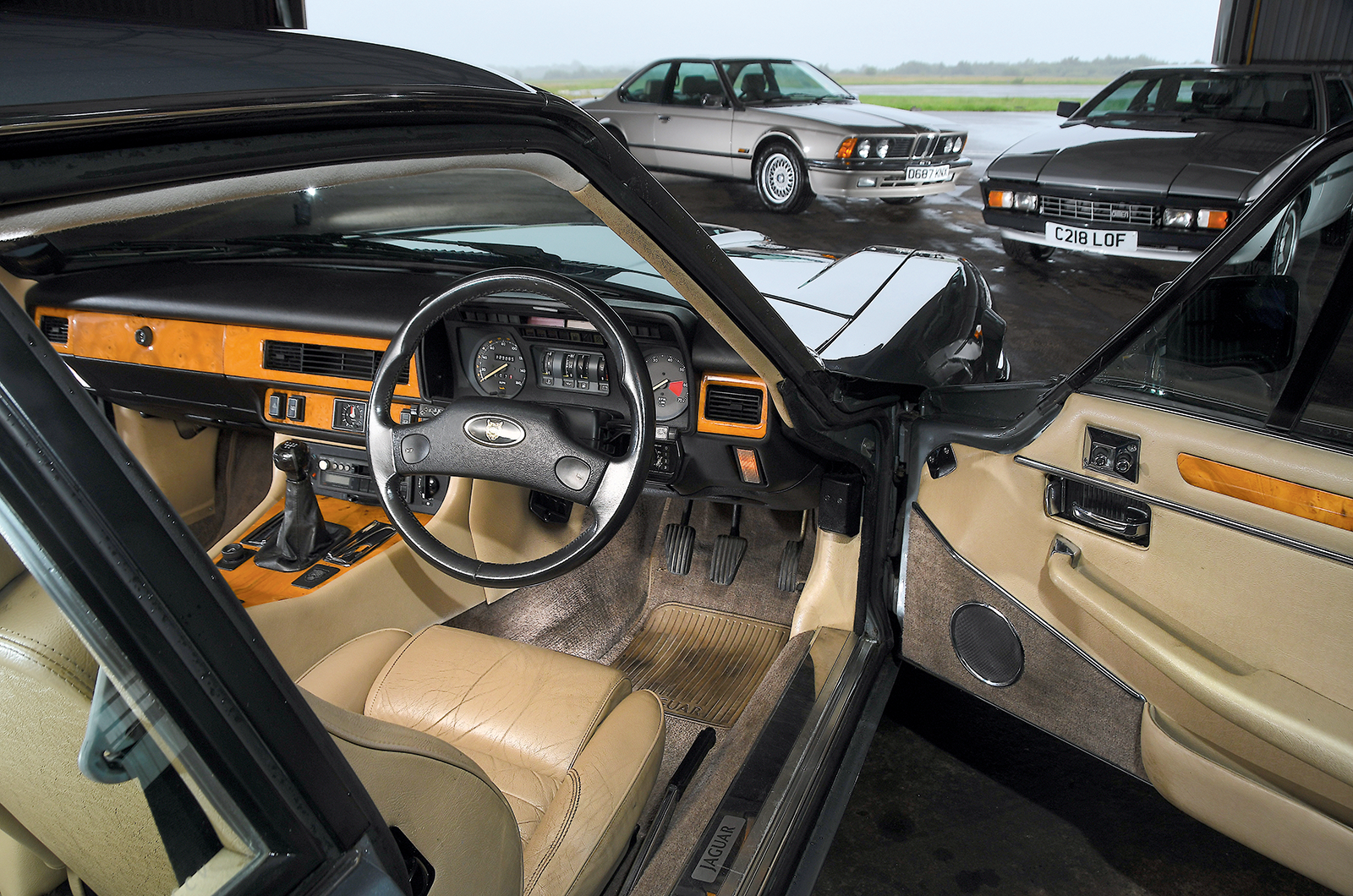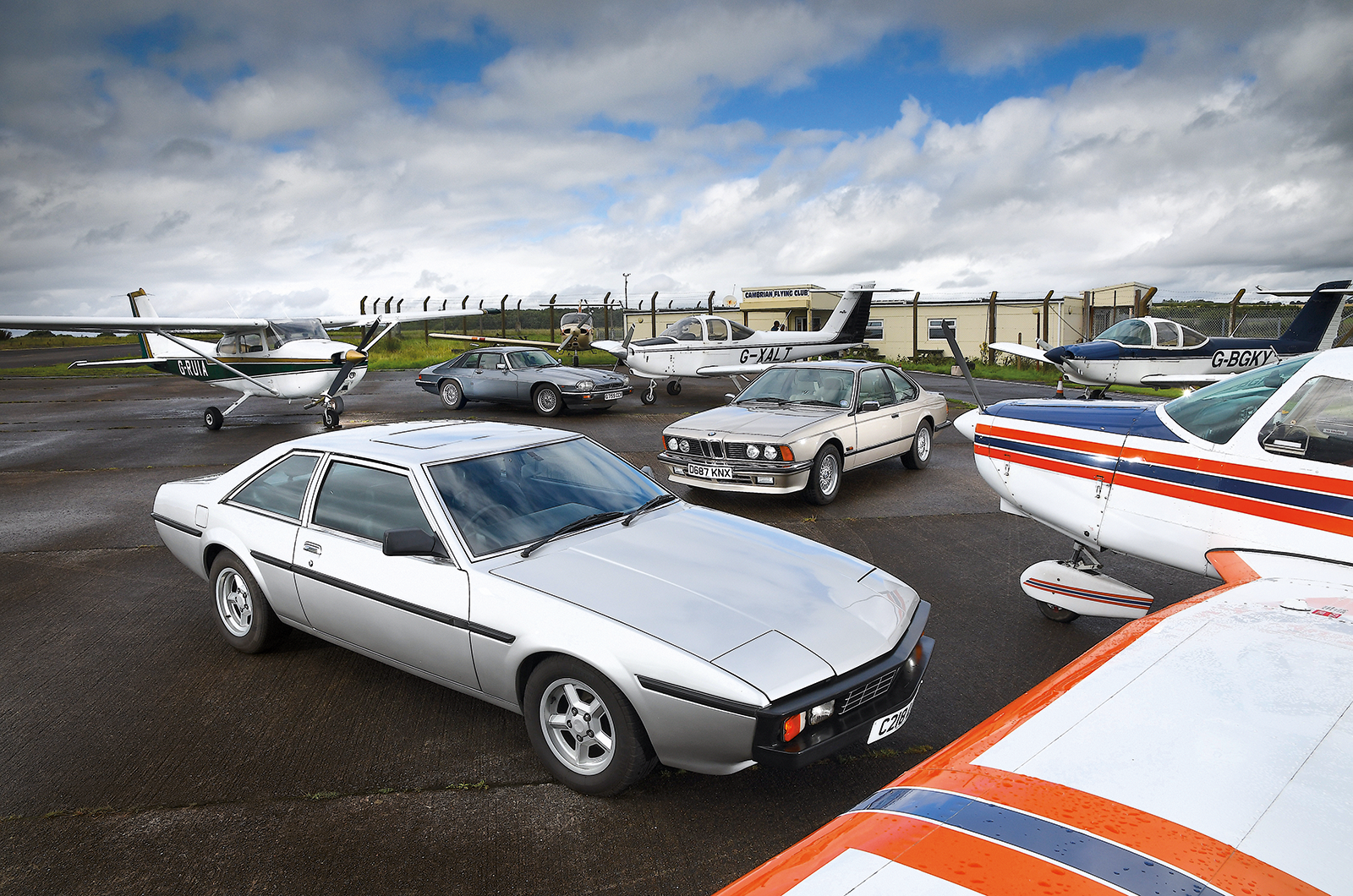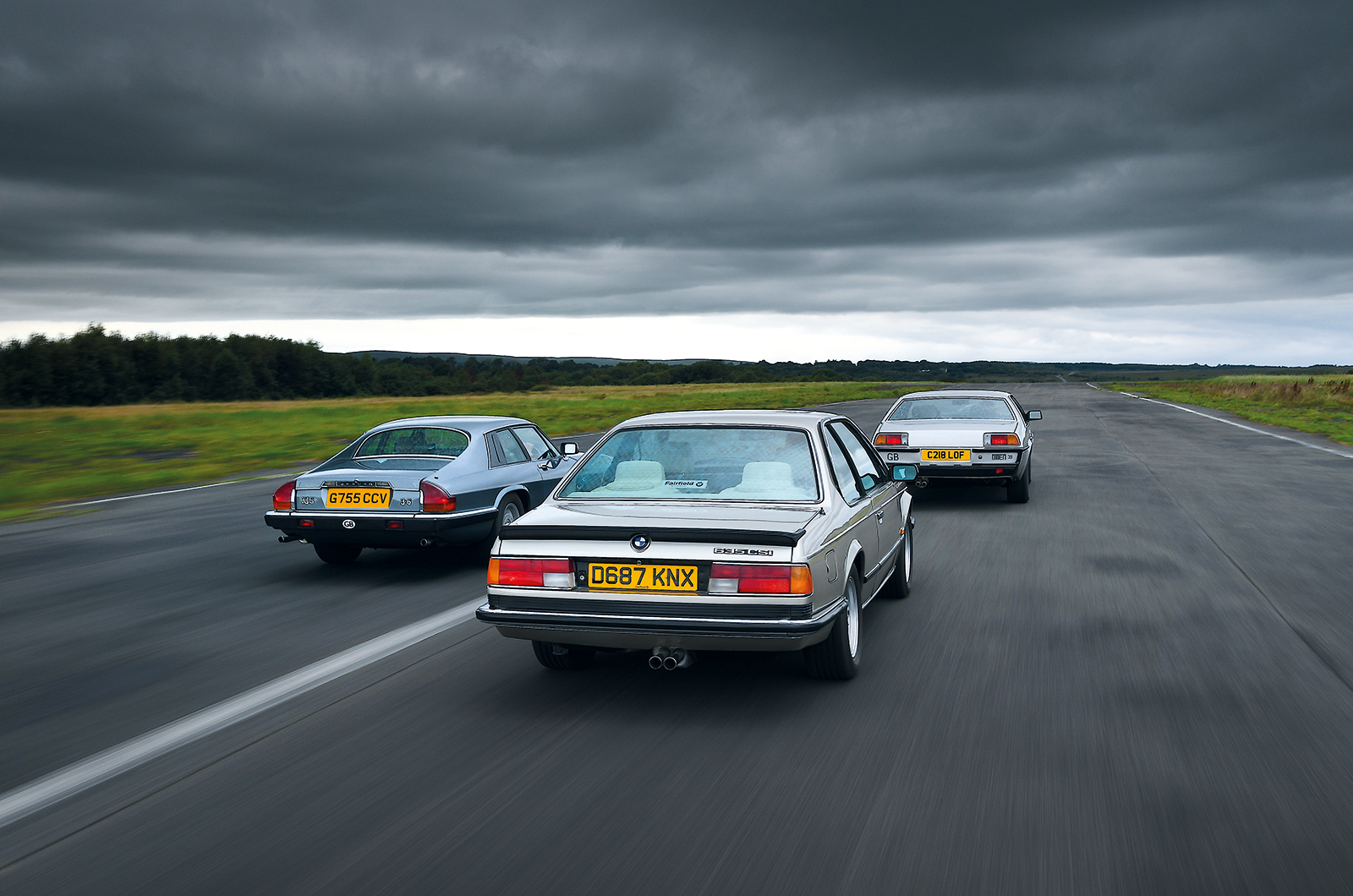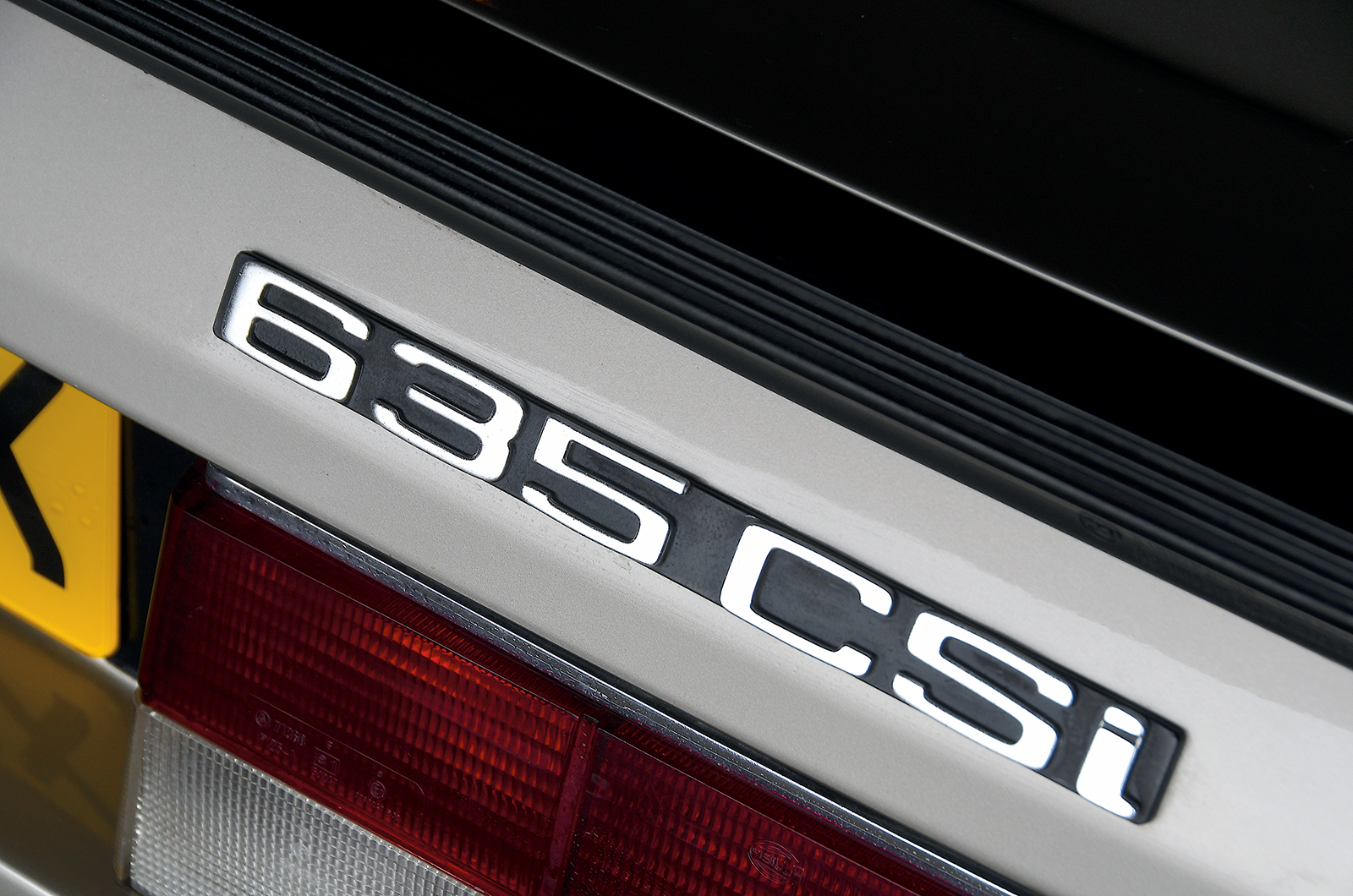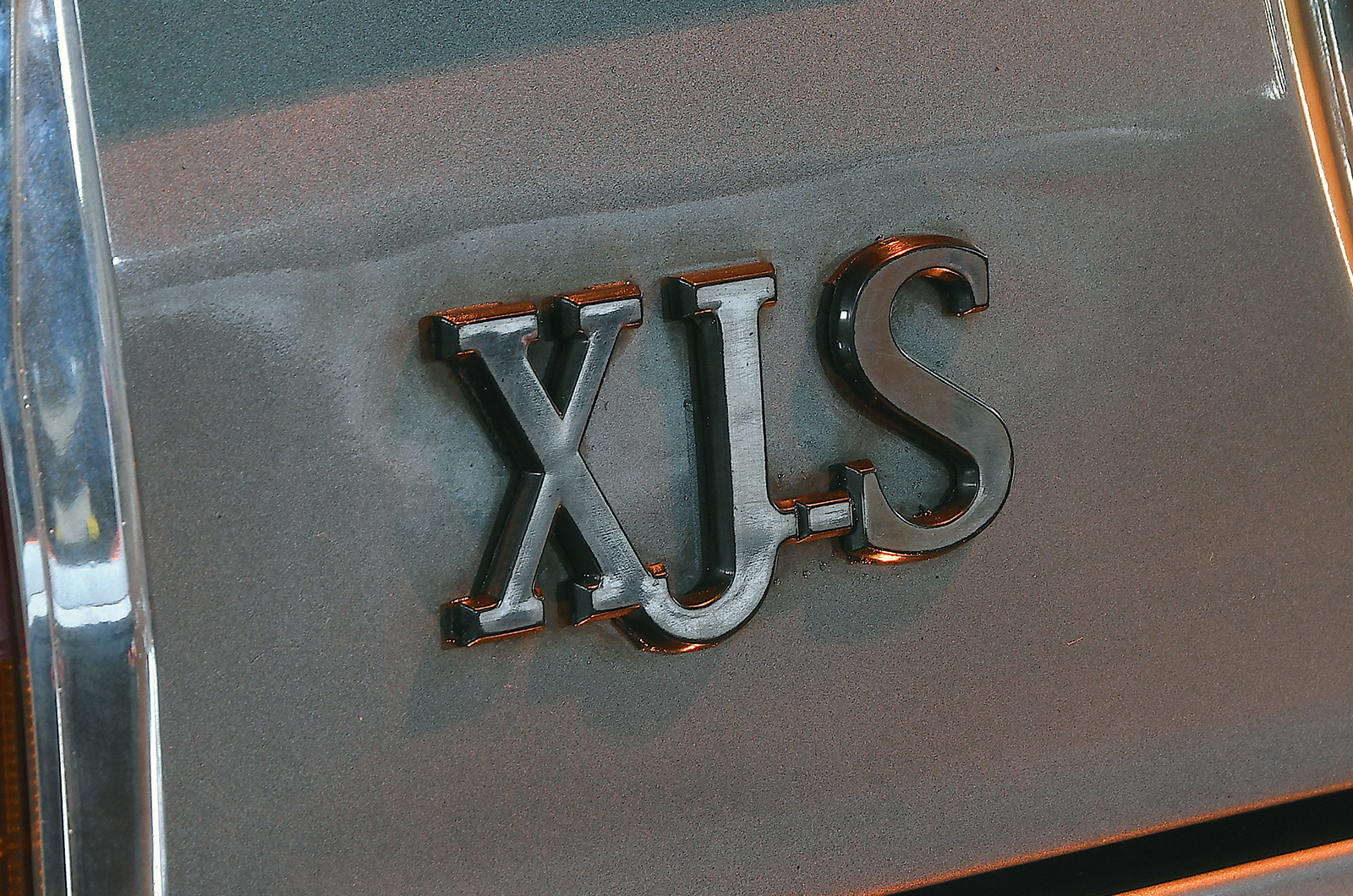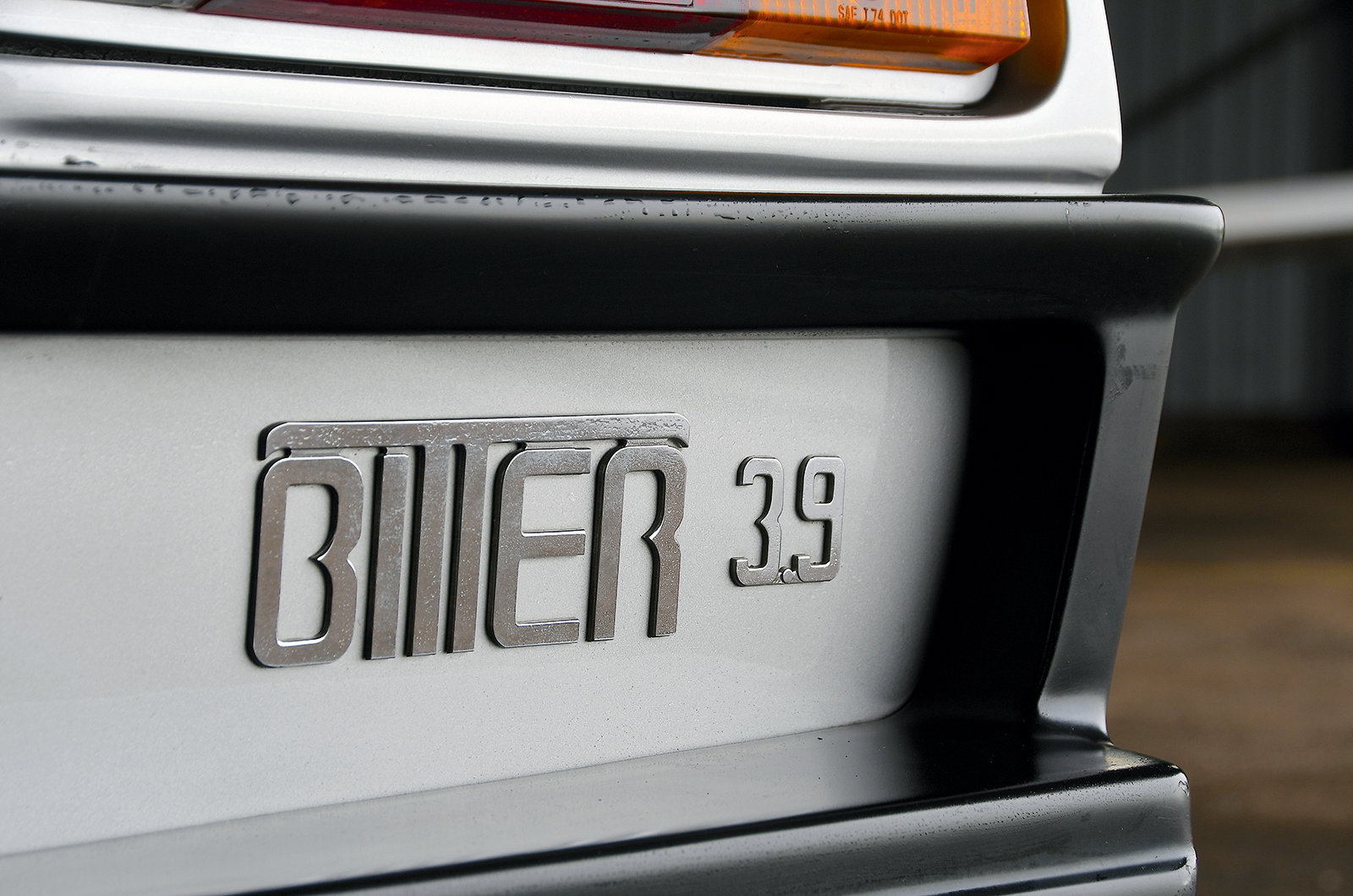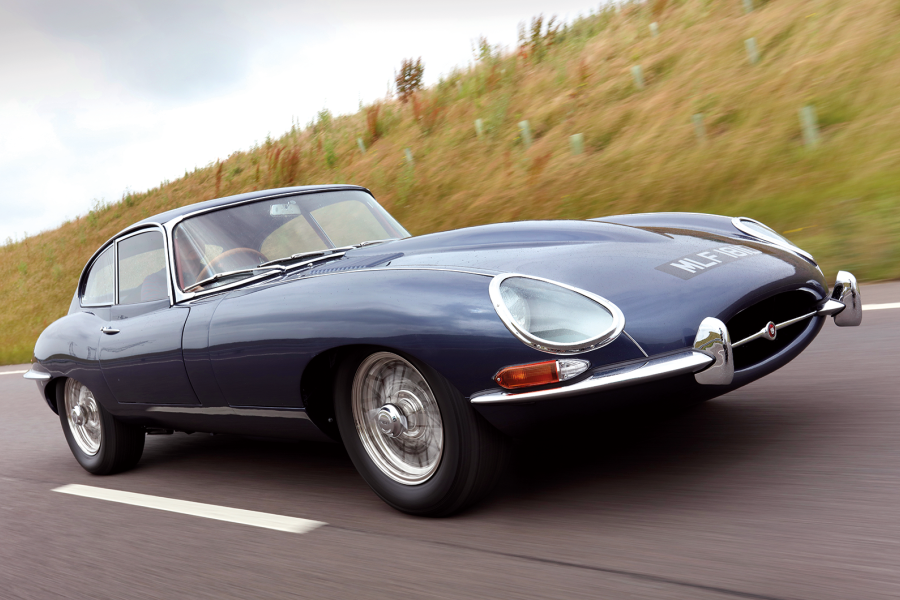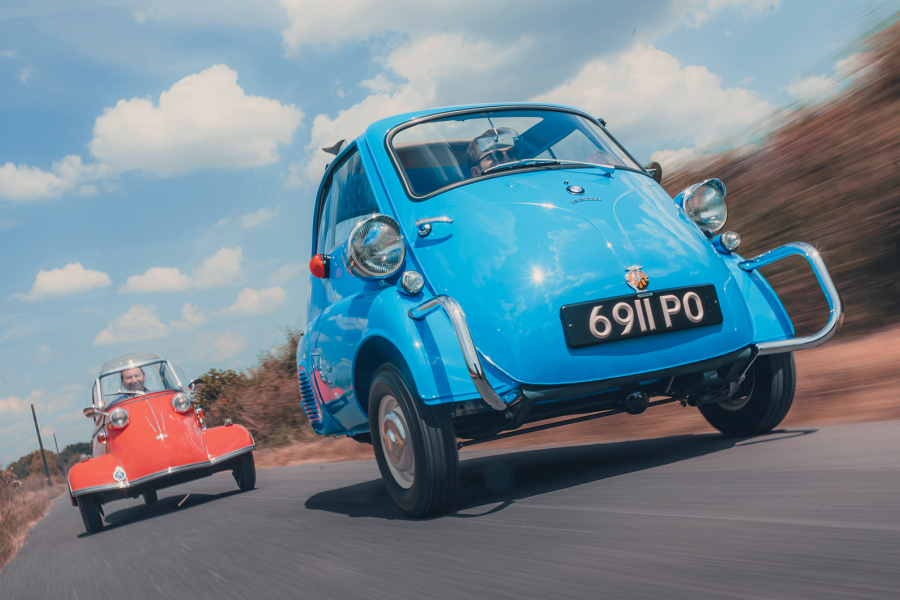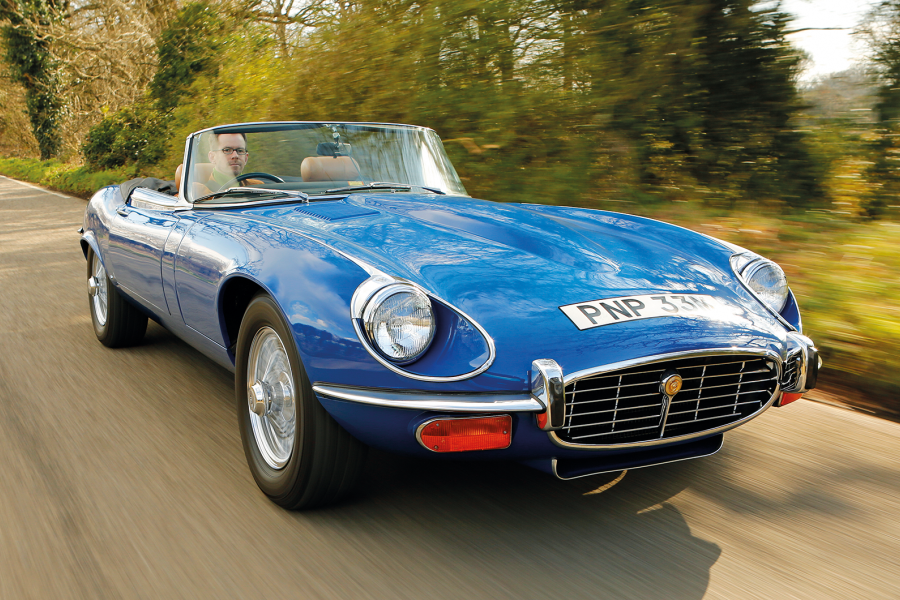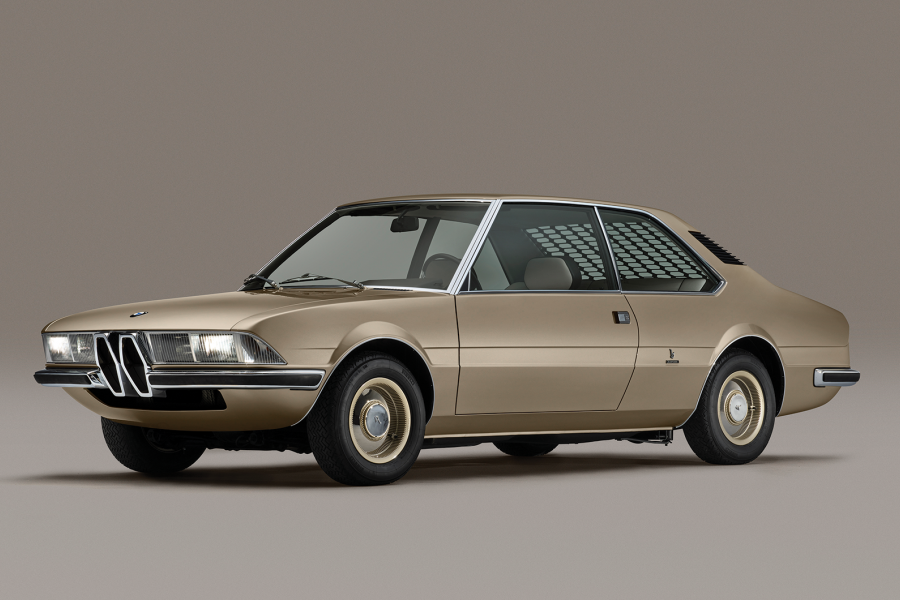Sitting in its six-way powered seats, the relationship between pedals, steering and your eyeline on the outside world feels just right.
The superb layout, fit and finish of the BMW 635CSi’s cabin
Under way, the BMW wafts serenely along, as pleasant to drive at low speeds as it is at higher ones, other than the slightly jiggly ride.
Where the Bitter’s straight-six rumbles, the BMW’s sings to 6300rpm, pulling hard to its redline as it goes through its four-speed ZF automatic gearbox, changing up at 60, 85 and 100mph for a zesty rate of acceleration not far adrift of the five-speed manual version.
With the fully matured, lower-pivot version of BMW’s semi-trailing-arm rear suspension, getting the tail out of shape takes a concerted effort, while with 3.4 turns lock-to-lock, the modestly boosted steering is well matched to the 635’s suave rather than aggressively brutish character.
The appeal of the big coupé endures
Sitting inches lower than the 6 Series, the XJ-S is a car that looks better now than it did 30 years ago.
With its huge bonnet, slinky lozenge-shaped headlights and swoopy rear buttresses, there is no mistaking it for anything else.
You limbo down into its intimate cabin, where the front seats are less luxuriant than the German cars’ and the rears are strictly for kids.
Being a later 3.6-litre AJ6-engined car, this beautifully maintained 124,000-miler benefits from the post-’87 tweaks aimed at improving engine refinement.
Initially you miss the turbine smoothness and hush of the V12. In fact, it would be fair to say that Jaguar’s alloy-block, multi-valve twin-cam lacks the silky feel of the BMW ‘six’, never mind its 5.3-litre sibling.
Yet it has a lusty character of its own, punching hard to its conservative 5700rpm redline with a throaty sense of purpose that is in no way coarse.
It might be a little cramped in the Jaguar’s cabin, but the interior of the XJ-S has more charm than the others in this test
Its 225 horses are also a good match for the well-plotted ratios in the five-speed Getrag manual ’box, where you can cruise at 70mph in top at 2250rpm or make commanding 50-90mph overtaking manoeuvres in its versatile third.
Not a Japanese flick-switch job, this, yet there is something engaging about its long, precise but slightly notchy movements.
The ability to choose just the right gear for any given situation immediately makes the XJ-S a slightly more alert-feeling car than either Bitter or BMW.
With its higher front spring rates and re-valved assistance for the rack-and-pinion steering, the 3.6 asserts itself on the road like no XJ-S before it, feeling much lighter on its feet and turning in more keenly yet with hardly any deterioration in the ride, which is subtly firmer but still beautifully compliant and very quiet.
Can the coachbuilt Bitter take on the might of Jaguar and BMW?
It’s interesting to see (having previously had very little to do with the six-cylinder versions) how the AJ6 engine changed the personality of the car, mostly for the better.
In some ways, this 3.6 is the best XJ-S I’ve driven; it just lacks the dark romance of the full-fat Leyland-era 5.3.
The Bitter SC is an interesting oddity, built just around the time when this sort of boutique vehicle was being made increasingly irrelevant by cars such as the XJ-S and the 6 Series in a world that no longer truly understood or needed such machines.
It steered a strange course between handbuilt ‘charm’ and reliable off-the-shelf banality that, in the end, failed to satisfy either those customers who might have wanted the SC for its curiosity value, or those who were looking for a credible alternative to a 6 Series.
Each looks very different from the others, when seen from behind
In fairness, the Bitter got far nearer to the standards set by the BMW than you might expect (falling down on the easy bits, such as its ugly dash), but in period the only true German alternative to a 635 was a Mercedes-Benz SEC.
By the time production ended in 1989, a total of 86,216 6 Series had found happy homes and subsequent attempts at building a big BMW coupé proved what a hard act it was to follow.
Effortlessly superior in important matters such as fit, finish and thoughtful design, the 635CSi was technically a more conservative car than the XJ-S – and in many ways not such a good one to drive.
Yet there is an air of mature and elegant practicality about the 6 Series that would make it my pick.
Images: John Bradshaw
Thanks to Swansea Airport
Factfiles
BMW 635CSi
- Sold/no built 1978-’89/86,216 (all 6s)
- Construction steel monocoque
- Engine iron-block, alloy-head, sohc 3430cc straight-six, Bosch fuel injection
- Max power 215bhp @ 5200rpm
- Max torque 228Ib ft @ 4000rpm
- Transmission five-speed manual or four-speed automatic, RWD
- Suspension independent, at front by MacPherson struts rear semi-trailing arms, coil springs, telescopic dampers; anti-roll bar f/r
- Steering power-assisted ZF recirculating ball
- Brakes discs, with servo and anti-lock
- Length 15ft 7¼in (4755mm)
- Width 5ft 8in (1725mm)
- Height 4ft 5¾in (1365mm)
- Wheelbase 8ft 7¼in (2626mm)
- Weight 3241Ib (1470kg)
- Mpg 19-25
- 0-60mph 7.5 secs
- Top speed 140mph
- Price new £25,290
- Price now £15-40,000*
Bitter SC
- Sold/no built 1981-’89/462
- Construction steel monocoque
- Engine all-iron, cam-in-head 3848cc straight-six, Bosch fuel injection
- Max power 210bhp @ 5100rpm
- Max torque 257Ib ft @ 3400rpm
- Transmission five-speed manual or four-speed automatic, RWD
- Suspension independent, at front by MacPherson struts rear semi-trailing arms, coil springs, telescopic dampers; anti-roll bar f/r
- Steering power-assisted worm and roller
- Brakes discs, with servo
- Length 15ft 9in (4800mm)
- Width 5ft 7in (1702mm)
- Height 4ft 4in (1320mm)
- Wheelbase 8ft 8in (2642mm)
- Weight 3439Ib (1560kg)
- Mpg 23
- 0-60mph 8.4 secs
- Top speed 137mph
- Price new £26,950
- Price now £20,000*
Jaguar XJ-S 3.6
- Sold/no built 1982-’91/8867
- Construction steel monocoque
- Engine all-alloy, dohc 3590cc straight-six, Lucas electronic fuel injection
- Max power 225bhp @ 5300rpm
- Max torque 239Ib ft @ 4000rpm
- Transmission five-speed manual or four-speed automatic, RWD
- Suspension independent, at front by wishbones, coil springs, telescopic dampers rear lower wishbones, driveshafts as upper links, twin spring/damper units
- Steering power-assisted rack and pinion
- Brakes discs, with servo
- Length 15ft 11in (4853mm)
- Width 5ft 11in (1791mm)
- Height 4ft 2in (1265mm)
- Wheelbase 8ft 6in (2951mm)
- Weight 3927Ib (1781kg)
- Mpg 18-24
- 0-60mph 7.2 secs
- Top speed 136mph
- Price new £19,248
- Price now £6-15,000*
*Prices correct at date of original publication
READ MORE
Jaguar XJ-S vs Lotus Elite: New order grand tourers
Luxury coupés: Mercedes 230CE vs Lotus Elite vs Lancia Gamma
Vauxhall Royale: Luton’s classiest coupé?
Grand Palais: the DS coupé Citroën should have made
Martin Buckley
Senior Contributor, Classic & Sports Car
